Compound interest
Compound interest in monetary assets refers to the one that is added to the initial capital and on which new interests are generated.
The generated interests are added period by period to the initial capital and to the interests already generated previously. In this way, value is created not only on the initial capital but also on the previously generated interests, which now generates new interests. That is, the generated interests accumulate to generate more interest.
In contrast, simple interest does not accumulate generated interests. The interest can be paid or received, on a loan that we pay or on a deposit that we receive. The condition that differentiates compound interest from simple interest is that while in a compound interest situation the accumulated interests are added and produce new profitability along with the initial capital, in a simple interest model, only the interests on the initial loaned or deposited capital is calculated.
Compound interest is one of the great advantages of investing, since it allows investors to obtain a return not only on their money, but also on their own previous return. For this reason, investment specialists recommend starting to invest as soon as possible, even if the amounts are small.
It is often said, incorrectly, that when a loan or deposit is for more than a year, the compound interest system is established, being simple interest in the case of short operations, less than a year. However, this is not always the case, as it will depend on the agreed conditions and the reinvestment of profits, rather than on the time period.
Advantage
Compound interest has a multiplier effect on investments, as the previous interests generate new interests, which are added. This makes compound interest a great ally for long-term investment. Humorously, Albert Einstein once said that compound interest is the most powerful force in the universe.
Let us imagine an investment in which we invest 10,000 $ and every year we get a 5% return on the invested capital. Since compound interest reinvests the interest previously generated, unlike simple interest, the future profit is exponentially greater with compound interest.
| Year | Capital without reinvestment | Simple interest | Capital with reinvestment | Compound interest |
|---|---|---|---|---|
| 0 | 10.000 $ | 500 $ | 10.000 $ | 500 $ |
| 1 | 10.500 $ | 500 $ | 10.500 $ | 525 $ |
| 2 | 11.000 $ | 500 $ | 11.025 $ | 551 $ |
| 3 | 11.500 $ | 500 $ | 11.576 $ | 579 $ |
| 4 | 12.000 $ | 500 $ | 12.155 $ | 608 $ |
| 5 | 12.500 $ | 500 $ | 12.763 $ | 638 $ |
| 6 | 13.000 $ | 500 $ | 13.401 $ | 670 $ |
| 7 | 13.500 $ | 500 $ | 14.071 $ | 704 $ |
| 8 | 14.000 $ | 500 $ | 14.775 $ | 739 $ |
| 9 | 14.500 $ | 500 $ | 15.513 $ | 776 $ |
| 10 | 15.000 $ | 500 $ | 16.289 $ | 814 $ |
| 11 | 15.500 $ | 500 $ | 17.103 $ | 855 $ |
| 12 | 16.000 $ | 500 $ | 17.959 $ | 898 $ |
| 13 | 16.500 $ | 500 $ | 18.856 $ | 943 $ |
| 14 | 17.000 $ | 500 $ | 19.799 $ | 990 $ |
| 15 | 17.500 $ | 500 $ | 20.789 $ | 1.039 $ |
| 16 | 18.000 $ | 500 $ | 21.829 $ | 1.091 $ |
| 17 | 18.500 $ | 500 $ | 22.920 $ | 1.146 $ |
| 18 | 19.000 $ | 500 $ | 24.066 $ | 1.203 $ |
| 19 | 19.500 $ | 500 $ | 25.270 $ | 1.263 $ |
| 20 | 20.000 $ | 20.000 $ | 26.533 $ | 1.327 $ |
If we continue with the sequence and plot it on a graph, the difference between compound interest and simple interest is represented as follows. It can be seen that while the investment with simple interest increases linearly, the investment with compound interest increases exponentially.
Formula for calculating compound interest
The formula is as follows:
Cn = C0 (1 + i)^n
C0 being the initial capital loaned, i the interest rate, n the period of time considered and Cn the resulting final capital.
Example of compound interest calculation
A practical example to determine compound interest with an initial capital of 1,000 $ and an interest rate of 5 % over a period of 5 years:
| Period | Amount at the beginning of the period | Interest for the period | Amount owed atthe end of the period |
|---|---|---|---|
| 1 | 1.000 $ | (1.000*5%)= 50 $ | 1.000 + 50 $= 1.050 $ |
| 2 | 1.050 $ | (1.050 *5%)= 52,50 $ | 1.050 + 52,50 $ = 1.102,50 $ |
| 3 | 1.102,5 $ | 55,13 $ | 1.157,63 $ |
| 4 | 1.157,63 $ | 57,88 $ | 1.215,541 $ |
| 5 | 1.215,51 $ | 60,78 $ | 1.276,28 $ |
As we can see, the resulting annual interest is not 50 $ (except for the initial period), but rather the generated and accumulated interests are added to subsequent periods, resulting in a profit or payment of 276,28 $ at the end of the operation, which would be 250 $ in a simple interest situation.
The writer recommends:

